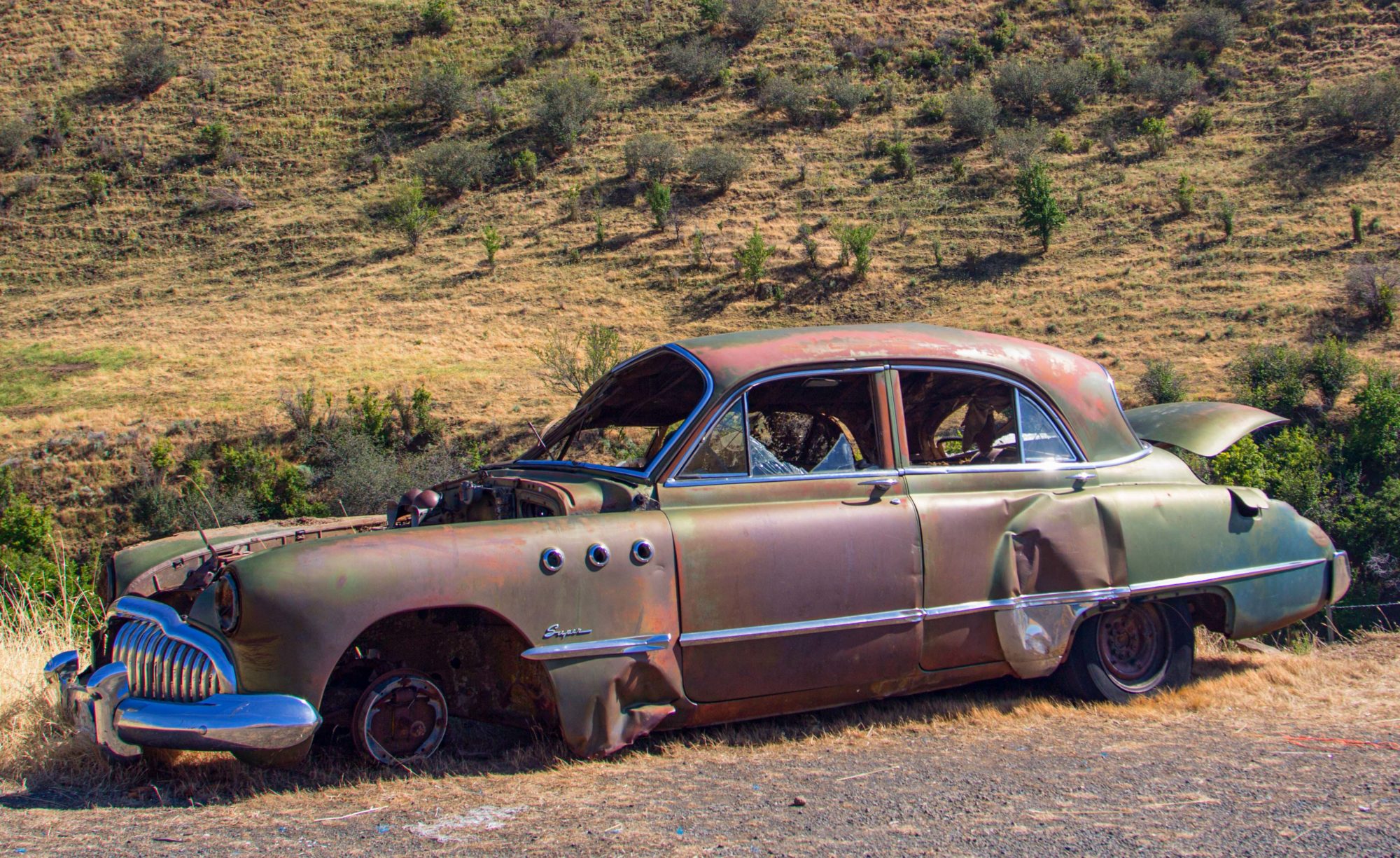My Guest Author today is my Daddy. One morning, I gave him an assignment to write a story about harvesting ice from the beaver ponds and storing the huge ice cubes in the icehouse that lasted into summer. His assignments were to provide more detail on life in the mountains and served as therapy to keep his mind active as well as
his writing skills. Here is his story:
Almost every ranch had an icehouse. Ours was a frame building which leaned against the meat house. It was covered with inch boards, both on the inside of the studding and on the outside. The space between the boards was insulated with sawdust. Inside the building more sawdust surrounded the stack of ice blocks. Folks on the prairie used straw for insulation. If they were near a sawmill, they used sawdust, which looked better floating on the top of a glass of iced tea.
Getting ice was a neighborhood affair. February or March was a good time to put up ice. By then Dad could drive the International truck onto the Brannin beaver ponds. The ice there was thick and clean. It was sawed into blocks about sixteen inches wide and twice as long. Two husky men used a pair of ice tongs to pull the ice out of the water. The blocks were then dragged up a plank onto Brannin’s horse drawn sled or Ward and Parker’s truck to be hauled to the appropriate ice houses. There it would be buried until ice using time in July or August.
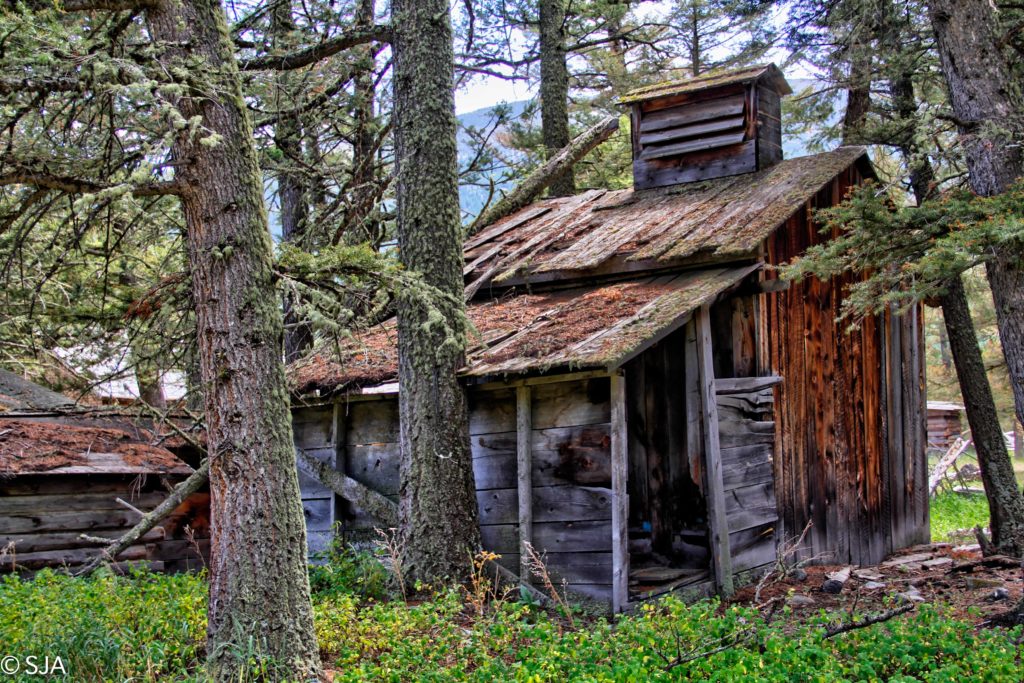
The ice kept well. A fellow down by Big Timber named, Lester Mack, had his icehouse burn to the ground. The mound of sawdust and ice blocks survived the fire and the Mack family dug out ice all summer.
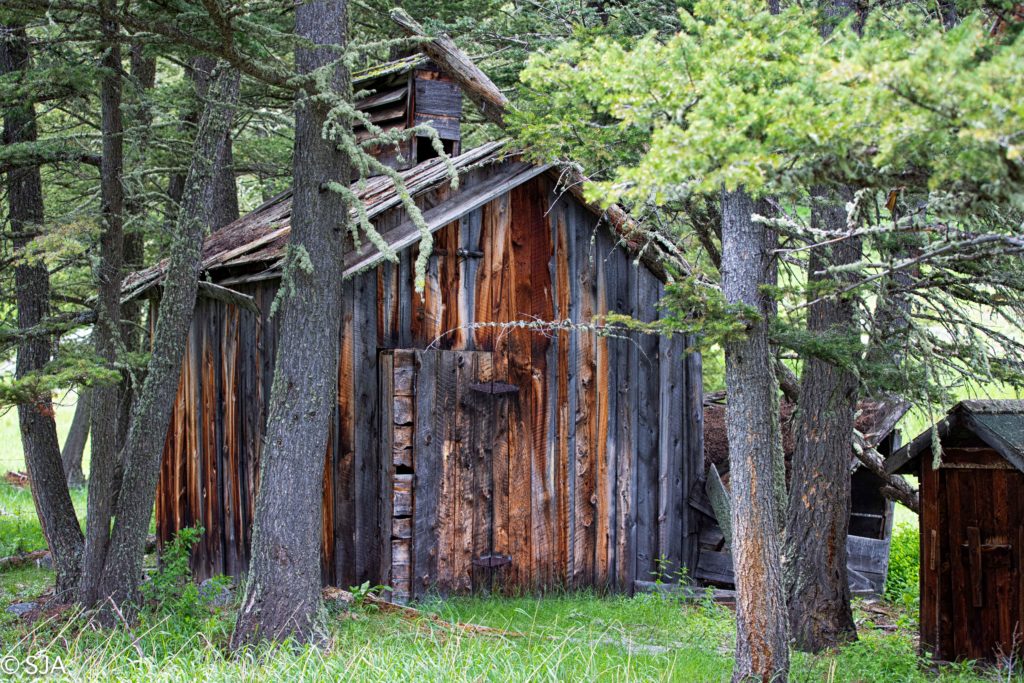
We had missed the midwinter birthday party (for Sonny Tronrud), but we got to watch the men put up ice. This time they did it on a Saturday. On weekdays we had seen the men put the ice blocks into the icehouse. However, we had never seen them saw the blocks on the pond. We were anxious to see this. When our lumberjacks sawed down trees and cut them into logs, one worker would get on each end of the saw. They’d pull it back and forth while it ate into the wood. It always took two men.
We wondered about the ice sawing operation. We knew that one person would stand on top of the ice. We couldn’t imagine where his sawing partner would stand. “Maybe it’s under the ice!” Sister Ellen was hoping that the bowlegged hired man would be the fellow operating the bottom end of the saw!
Effie Bowlegs had the Winter Mopes. Not only was he cross, but he had also been doing things which brought no reward – like bossing Sister Ellen. Besides this he overate. No doubt a symptom of the Mopes. He had been reaching across the dinner table to get a third helping of navy beans before the rest of us could get seconds. He never even asked for them – just reached across the table without so much as a “Please pass,” “Thank you,” or anything. Sister was hoping he’d have to stand in water over his head and pull one end of the saw. When we got to the pond, they didn’t have a two man saw. Instead they had a saw with only one handle. There was no one down in the lower regions.
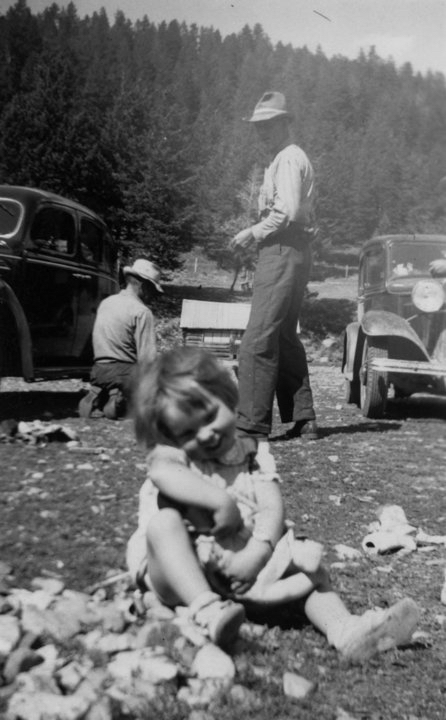
Barney Brannin marked off the ice in rectangles. He was showing off for the schoolteacher. Her smile lifted him out of his winter doldrums. Uncle Gus had to work his off. He chopped a hole in the ice and started sawing. Soon the center of the pond looked like a big checkerboard with ice blocks floating on it. The next task was to get the ice out of the water.
One piece of ice had missed being cut in two. It was a monster block which floated among the other chunks. Father motioned to Billy Briner and Jimmy Hicks, who were the teenagers in the squad of workers. “Hook the ice tongs in it and pull the bloody thing out,” he said. “It will hold down our load.”
Ice tongs have two long steel legs which are fastened together like a giant salad server. The handle ends have large loops for handholds. The other end has sharpened points which are forced into the ice. The boys hooked the tongs into the block and pulled it part way out of the water. Mr. Bowlegs watched critically. Not only did he eat all the beans, he was also standing around with his teeth in his mouth telling others what to do, which goes along with severe cases of Mopes.
“You’ve got to submerge it first,” Mr. Bowlegs said. “Huh?” “Submerge it. Don’t you know what submerge means? Push the block of ice under the water. You’ve been watching us all day. And, when it bobs up, jerk it onto the top of the ice.”
The day was cold. Snow was sifting over the top of the pond. The teenagers pushed down, one on each end of the tongs. The block dipped into the water. They yanked as it bobbed to the top. The ice made it about halfway up and slid back. The boys held the tongs ready to give another try. “I can do it by myself.” Their self-appointed boss pushed the youngsters aside and grasped a tong handle in each hand. “Just shove her down,” he said as he ducked the block at the edge of the water coated ice. “Then yank her out like this.”
The supervisor braced his feet and gave a big tug. The block bounced up and the block sunk down again. Mr. Bowlegs’ feet slipped. The down pull did the rest. There were wild gyrations followed by a royal splash as Bowlegs demonstrated the finer points of submersion. When he surfaced, Father said, “Hook the blooming tongs in him and flop him out of the water.”
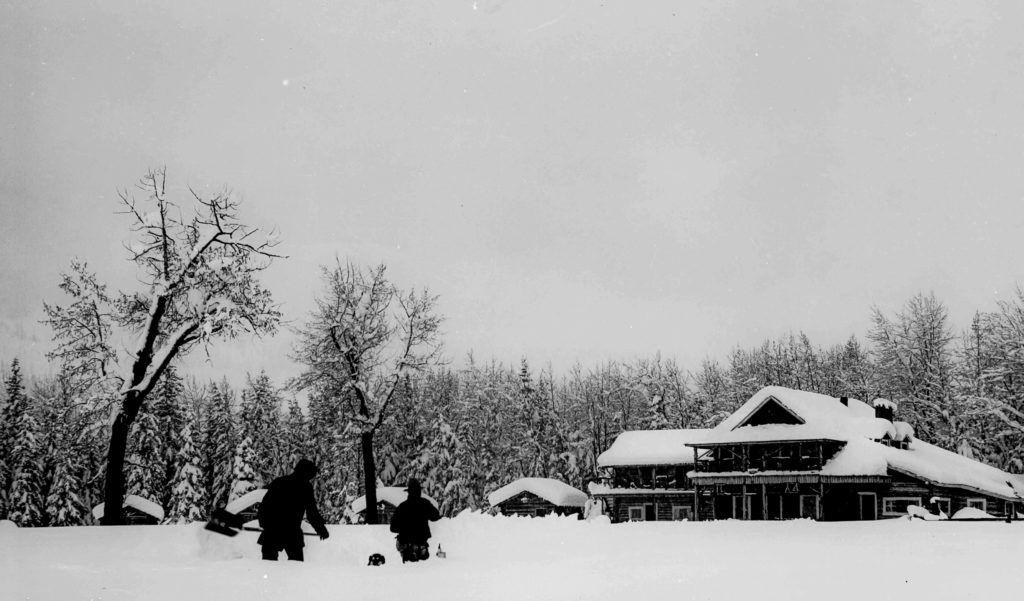
Before Billy could oblige, someone grabbed the swimmer’s sleeve and landed him. He hobbled back to the ranch house half a mile away! By the time he got there his clothes were frozen and he was clanking like a knight in armor. His teeth chattered until supper time and he didn’t eat but two helpings of beans. He even said, “Please pass,” for those.
People will tell you, Winter Mopes is a drastic malady. Drastic maladies are cured by drastic measures. Even clergy burn out might be cured by a mid-winter baptism in an ice pond.
As Uncle Dick says, “It’s a bad cure that don’t do no good.”
